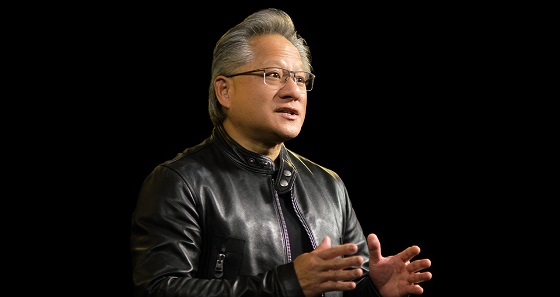Yesterday, NVIDIA CEO Jensen Huang made an extensive series of announcements at the GTC conference, almost exclusively designed to bolster the capabilities of generative AI. Among these announcements was the introduction of the NVIDIA Blackwell platform, a computing system specifically developed to enhance the performance of generative AI, particularly in managing large language models with trillions of parameters.
In his keynote Huang emphasized the necessity of a new computing paradigm, accelerated computing, which promises substantial improvements over general-purpose computing across various industries. The Blackwell platform, named after mathematician David Harold Blackwell, represents a leap from NVIDIA’s previous Hopper architecture, delivering enhanced performance and featuring advanced interconnect technologies. Notably, the Blackwell chip significantly outperforms its predecessor in both training and inference tasks.
Alongside Blackwell, NVIDIA introduced the NVIDIA NIM (inference microservices) and Omniverse Cloud APIs, focusing on enhancing AI applications in the physical world through advanced simulation capabilities. These innovations are expected to have widespread applications, from robotics to medical technology.
AI Supercomputer
Huang also highlighted the NVIDIA GB200 Grace Blackwell Superchip and the NVIDIA DGX SuperPOD, a next-generation AI supercomputer designed for generative AI training and inference workloads on a large scale. This supercomputer boasts remarkable AI supercomputing capabilities and introduces a new, efficient liquid-cooled architecture.
Additionally, Huang discussed the potential transformations in software creation processes brought about by generative AI. He introduced NVIDIA NIMs, which leverage NVIDIA’s computing libraries and AI models, to facilitate a new way of assembling AI-driven software.
Robotics
In his address, Huang covered various industry-specific applications of these technologies, including telecommunications, semiconductor design, healthcare, and robotics. For instance, the NVIDIA 6G Research Cloud aims to advance communications, while the NVIDIA Earth Climate Digital Twin platform focuses on climate and weather prediction.
“Everything that moves will be robotic”, Huang said. The automotive industry will be a big part of that. NVIDIA computers are already in cars, trucks, delivery bots and robotaxis. Huang announced that BYD, the world’s largest autonomous vehicle company, has selected NVIDIA’s next-generation computer for its AV, building its next-generation EV fleets on DRIVE Thor.
To help robots better see their environment, Huang also announced the Isaac Perceptor software development kit with state-of-the-art multi-camera visual odometry, 3D reconstruction and occupancy map, and depth perception. And to help make manipulators, or robotic arms, more adaptable, NVIDIA is announcing Isaac Manipulator — a state-of-the-art robotic arm perception, path planning and kinematic control library.

